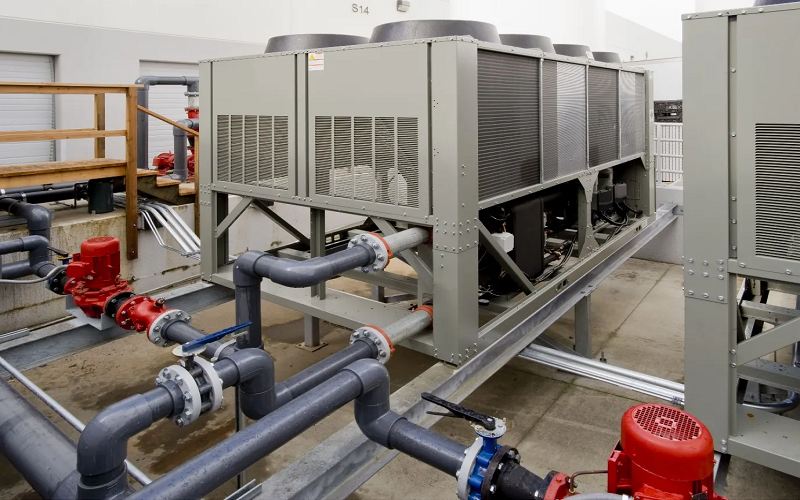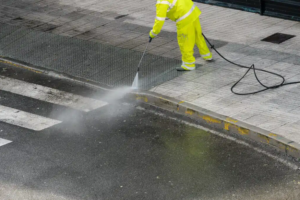Troubleshooting Air-Cooled Chiller Performance Issues

Air-cooled chillers are essential for many industrial and commercial cooling applications, but like all mechanical systems, they can encounter performance issues. Identifying and addressing these problems promptly is crucial to maintain efficiency and prevent costly downtime. This article outlines common performance issues in air-cooled chillers and provides practical troubleshooting tips, with a focus on the role of microchannel heat exchangers in maintaining optimal performance.
Common Performance Issues in Air-Cooled Chillers
Insufficient Cooling Capacity
Insufficient cooling capacity is one of the most common problems encountered with air-cooled chillers. This issue can manifest as the chiller not reaching the desired temperature or struggling to maintain it. Several factors can contribute to this problem, including:
- Dirty or Blocked Condenser Coils: Over time, dust and debris can accumulate on the condenser coils, obstructing airflow and reducing heat transfer efficiency. Regular cleaning of the coils, especially those with microchannel designs, is essential to prevent this issue.
- Low Refrigerant Levels: Insufficient refrigerant can significantly impact the chiller’s cooling capacity. Regularly checking for leaks and ensuring proper refrigerant levels can mitigate this problem.
- Faulty Expansion Valve: The expansion valve regulates the refrigerant flow into the evaporator. If it malfunctions, it can cause inadequate cooling. Inspecting and replacing faulty expansion valves can restore proper function.
High Energy Consumption
Air-cooled chillers can sometimes consume more energy than expected, leading to increased operational costs. Common causes include:
- Dirty Coils and Filters: Similar to insufficient cooling, dirty coils and filters can force the system to work harder, consuming more energy. Regular maintenance and cleaning are crucial.
- Inaccurate Thermostat Settings: Incorrect thermostat settings can cause the chiller to overcool or run longer than necessary. Ensuring accurate calibration of the thermostat helps optimize energy use.
- Inefficient Compressor Operation: An inefficient compressor, possibly due to wear or damage, can increase energy consumption. Inspecting the compressor and replacing worn components can enhance efficiency.
Frequent Cycling On and Off
Frequent cycling of the chiller can indicate several underlying issues, such as:
- Oversized or Undersized Chiller: A chiller that is not appropriately sized for the application will cycle on and off frequently. Ensuring the correct chiller size for your cooling needs is essential.
- Faulty Thermostat or Sensor: Malfunctioning thermostats or sensors can cause inaccurate temperature readings, leading to frequent cycling. Regular inspection and calibration of these components are necessary.
- Refrigerant Issues: Both low and high refrigerant levels can cause cycling issues. Maintaining proper refrigerant levels through regular checks is vital.
The Role of Microchannel Heat Exchangers
Microchannel heat exchangers are integral to the performance and efficiency of modern air-cooled chillers. These heat exchangers, with their compact design and enhanced heat transfer capabilities, offer several benefits that help mitigate common performance issues.
Enhanced Heat Transfer Efficiency
Microchannel coils provide a larger surface area for heat exchange, significantly improving the chiller’s cooling capacity and efficiency. This design allows for better thermal performance, reducing the likelihood of insufficient cooling and high energy consumption. Regular cleaning and maintenance of microchannel coils ensure that their performance remains optimal.
Reduced Refrigerant Charge
The efficient design of microchannel heat exchangers requires less refrigerant, reducing the risk of refrigerant-related issues such as low levels or leaks. This not only improves cooling efficiency but also reduces the environmental impact and operational costs associated with refrigerant management.
Durability and Maintenance
Microchannel coils are typically made from aluminum, offering excellent corrosion resistance and durability. This robustness translates to longer operational life and fewer maintenance issues. However, regular inspections and cleaning are still essential to prevent dirt and debris buildup, which can impede performance.
Practical Troubleshooting Tips
Regular Maintenance
Implementing a regular maintenance schedule is the most effective way to prevent and troubleshoot performance issues in air-cooled chillers. This includes cleaning coils, filters, and checking refrigerant levels.
Monitoring and Diagnostics
Using advanced monitoring and diagnostics tools can help detect issues early. IoT-enabled systems and intelligent controls can provide real-time data and alerts, allowing for proactive maintenance and quick resolution of problems.
Professional Inspection
Periodic professional inspections are crucial. HVAC professionals can identify and address complex issues that may not be apparent during routine maintenance.
Conclusion: Ensuring Optimal Performance
Addressing performance issues in air-cooled chillers is essential for maintaining efficiency and minimizing operational costs. By understanding common problems and leveraging the benefits of microchannel heat exchangers, such as those found at https://www.kaltra.com/microchannel-coils, you can ensure your chiller operates at peak performance. Regular maintenance, advanced diagnostics, and professional inspections are key strategies to keep your air-cooled chiller running smoothly.





